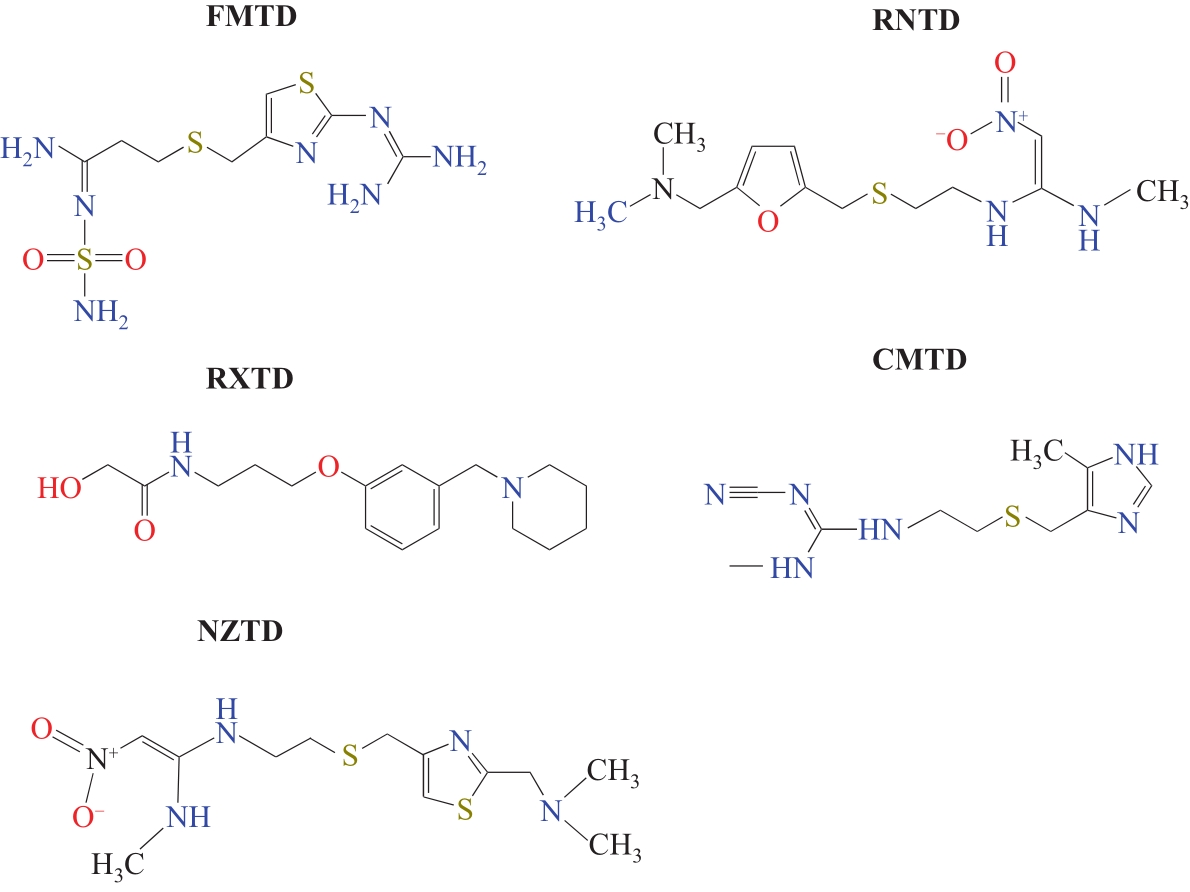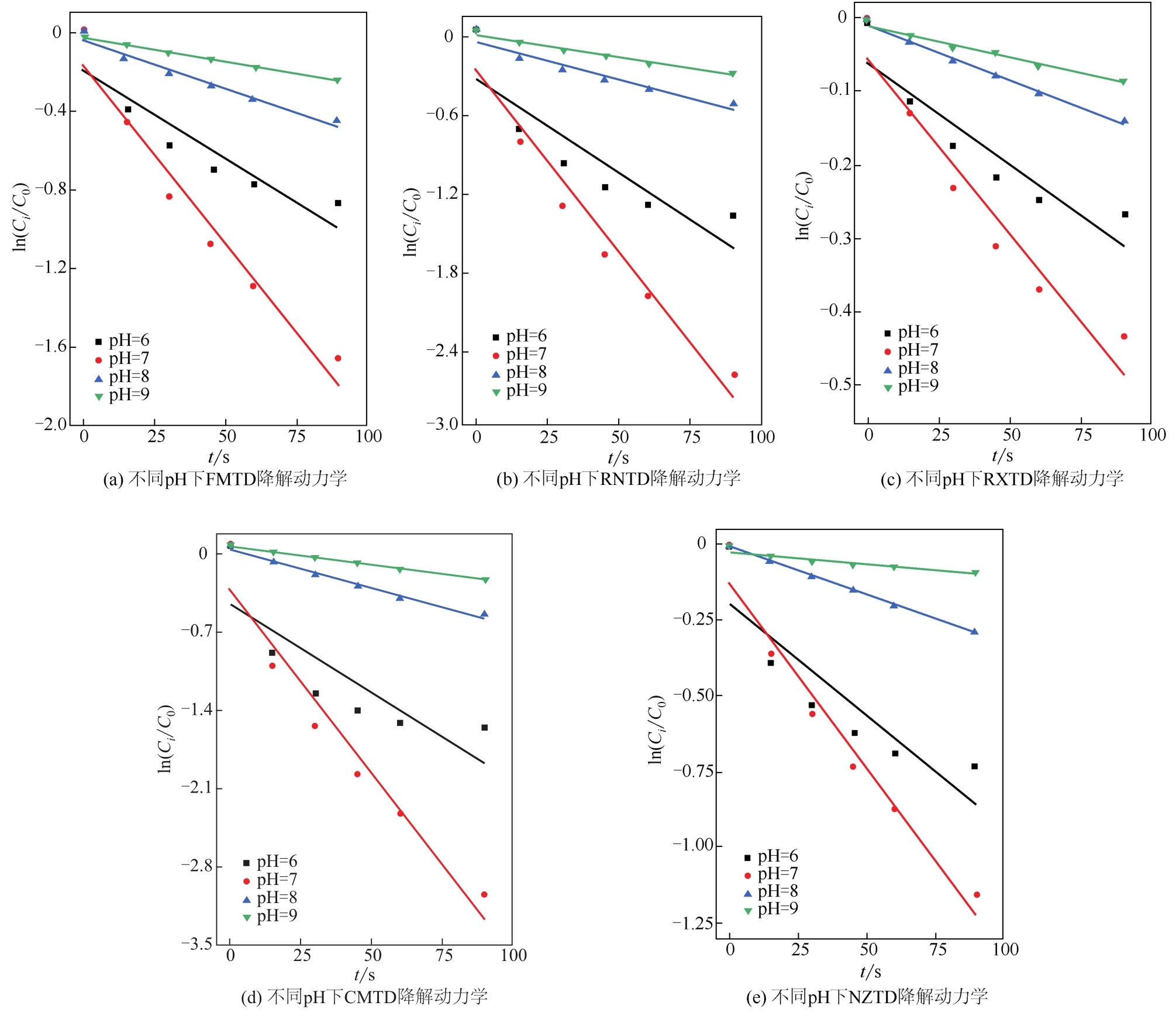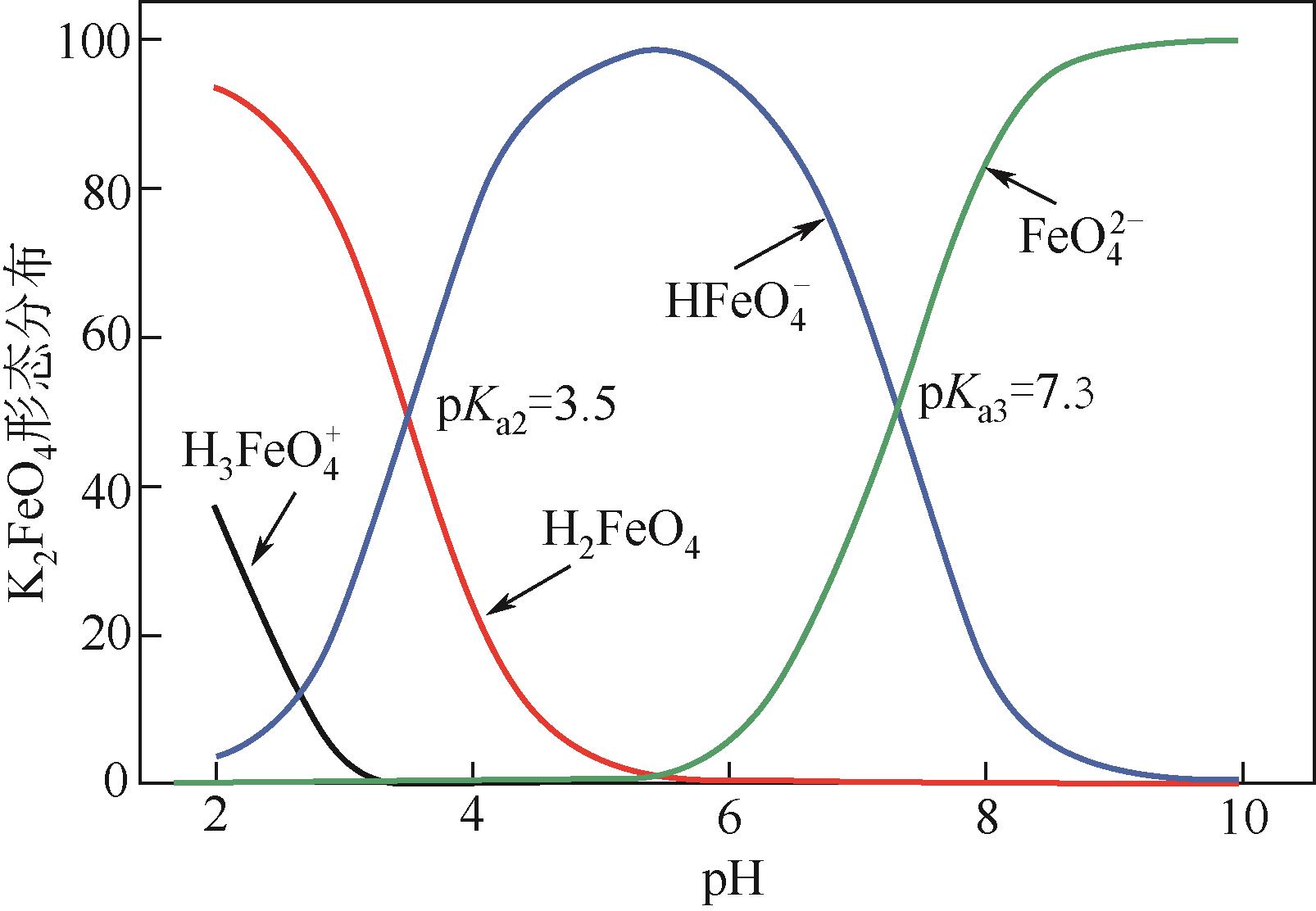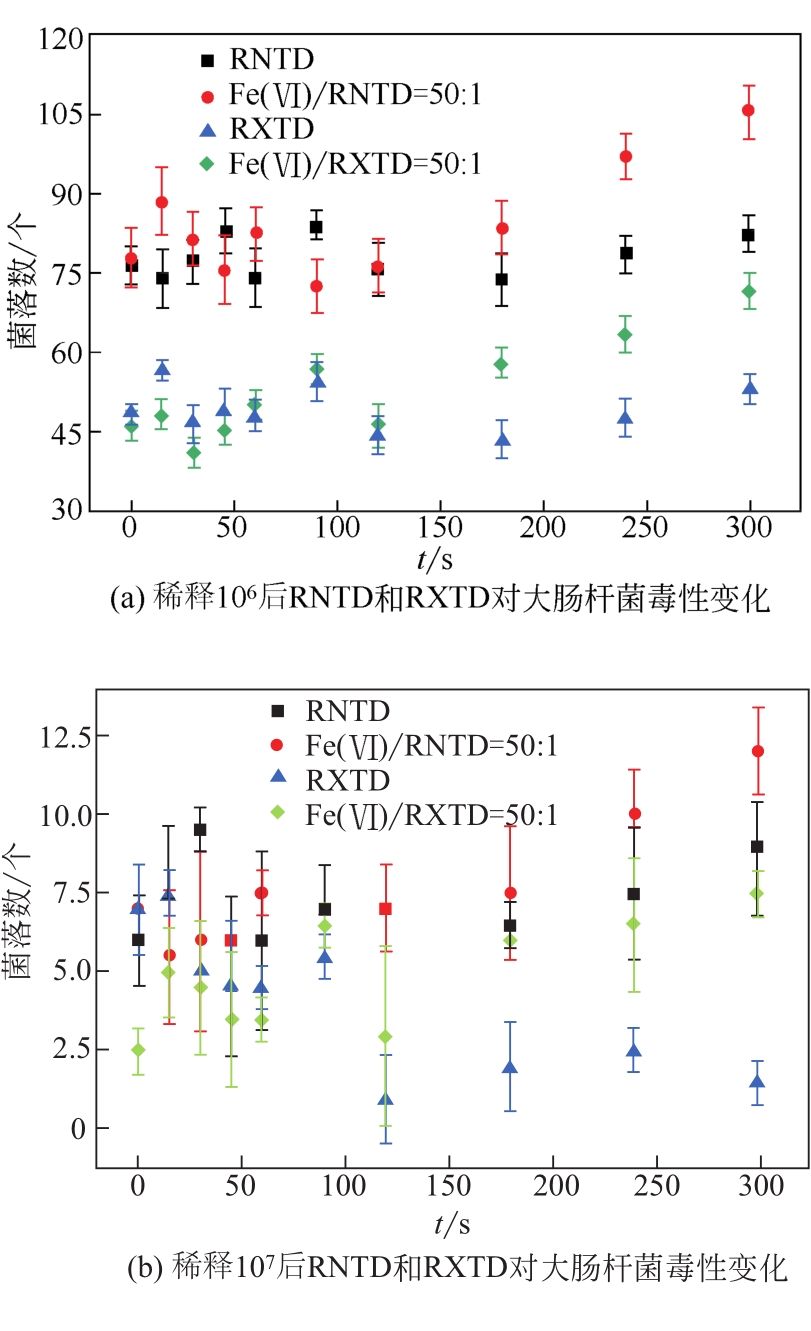| 1 |
WU Shou-Mei, Yu-Hsiang HO, WU Hsin-Lung, et al. Head-column field-amplified sample stacking in capillary electrophoresis for the determination of cimetidine, famotidine, nizatidine, and ranitidine-HCl in plasma[J]. Electrophoresis, 2001, 70(3): 540-548.
|
| 2 |
RADJENOVIĆ J, PETROVIĆ M, BARCELÓ D. Fate and distribution of pharmaceuticals in wastewater and sewage sludge of the conventional activated sludge (CAS) and advanced membrane bioreactor (MBR) treatment[J]. Water Research, 2008, 43(3): 831-841.
|
| 3 |
CASTIGLIONI S, BAGNATI R, FANELLI R, et al. Removal of pharmaceuticals in sewage treatment plants in Italy[J]. Environmental Science & Technology, 2006, 40(1): 357-363.
|
| 4 |
张翠锋, 谢海棠, 潘国宇. 大分子药物的吸收、分布、代谢、排泄和毒性特征及药代模型的应用[J]. 药学学报, 2016, 51(8): 1202-1208.
|
|
ZHANG Cuifeng, XIE Haitang, PAN Guoyu. The absorption, distribution, metabolism, excretion and toxicity characteristics of macromolecular drugs and the application of pharmacokinetic models [J]. Acta Pharmaceutica, 2016, 51(8): 1202-1208.
|
| 5 |
KOLPIN D W, FURLONG E T, MEYER M T, et al. Pharmaceuticals, hormones, and other organic wastewater contaminants in U. S. streams, 1999—2000: a national reconnaissance[J]. Environmental Science & Technology, 2002, 36(6): 1202-1211.
|
| 6 |
DONG Huiyu, QIANG Zhimin, LIAN Junfeng. Degradation of nitro-based pharmaceuticals by UV photolysis: kinetics and simultaneous reduction on halonitromethanes formation potential[J]. Water Research, 2017, 119: 83-90.
|
| 7 |
WANG Xiaofeng, ZHOU Beihai, SHAO Xia. Determination of acid dissociation constants and reaction kinetics of dimethylamine-based PPCPs with O3, NaClO, ClO2 and KMnO4[J]. Journal of Environmental Science and Health A, 2019, 54(6): 518-525.
|
| 8 |
KEANE D, BASHA S, NOLAN K, et al. Photodegradation of famotidine by integrated photocatalytic adsorbent (IPCA) and kinetic study[J]. Catalysis Letters, 2010, 141(2): 300-308.
|
| 9 |
KARPIŃSKA J, SOKÓŁ A, KOBESZKO M, et al. Study on degradation process of famotidine hydrochloride in aqueous samples[J]. Toxicological & Environmental Chemistry, 2010, 92(8): 1409-1422.
|
| 10 |
HOPPE P D, ROSI-MARSHALL E J, BECHTOLD H A. The antihistamine cimetidine alters invertebrate growth and population dynamics in artificial streams[J]. Freshwater Science, 2012, 31(2): 379-388.
|
| 11 |
JIANG Jiaqian. Advances in the development and application of ferrate(Ⅵ) for water and wastewater treatment[J]. Journal of Chemical Technology & Biotechnology, 2014, 89(2): 165-177.
|
| 12 |
WANG Yingling, LIU Haijin, LIU Guoguang, et al. Oxidation of diclofenac by potassium ferrate(Ⅵ): reaction kinetics and toxicity evaluation[J]. Science of the Total Environment, 2014, 506/507: 252-258.
|
| 13 |
SHARMA V K, LUTHER G W, MILLERO F J. Mechanisms of oxidation of organosulfur compounds by ferrate(Ⅵ) [J]. Chemosphere, 2011, 82(8): 1083-1089.
|
| 14 |
SHARMA V K, LIU Fei, TOLAN S, et al. Oxidation of β-lactam antibiotics by ferrate(Ⅵ) [J]. Chemical Engineering Journal, 2013, 221: 446-451.
|
| 15 |
GOMBOS E, BARKÁCS K, FELFÖLDI T, et al. Removal of organic matters in wastewater treatment by ferrate(Ⅵ)-technology[J]. Microchemical Journal, 2013, 107: 115-120.
|
| 16 |
QIAN Yajie, HUANG Jinjing, LIU Xiang, et al. Rapid oxidation of histamine H2-receptor antagonists by peroxymonosulfate during water treatment: kinetics, products, and toxicity evaluation[J]. Water Research, 2020, 185: 116278
|
| 17 |
AN Jibin, XIA Chunqiu, HE Jiahong, et al. Oxidation of propyl paraben by ferrate( ): kinetics, products, and toxicity assessment[J]. Journal of Environmental Science and Health A, 2018, 53(10): 873-882. ): kinetics, products, and toxicity assessment[J]. Journal of Environmental Science and Health A, 2018, 53(10): 873-882.
|
| 18 |
KAMACHI T, KOUNO T, YOSHIZAWA K. Participation of multioxidants in the pH dependence of the reactivity of ferrate( ) [J]. The Journal of Organic Chemistry, 2005, 70(11): 4380-4388. ) [J]. The Journal of Organic Chemistry, 2005, 70(11): 4380-4388.
|
| 19 |
SHARMA V K, CABELLI D E. Reduction of oxyiron( ) by sulfite and thiosulfate in aqueous solution[J]. The Journal of Physical Chemistry A, 2009, 113(31): 8901-8906. ) by sulfite and thiosulfate in aqueous solution[J]. The Journal of Physical Chemistry A, 2009, 113(31): 8901-8906.
|
| 20 |
SHARMA V K, SMITH J O, MILLERO F J. Ferrate( ) oxidation of hydrogen sulfide[J] . Environmental Science & Technology, 1997, 31(9): 2486-2491. ) oxidation of hydrogen sulfide[J] . Environmental Science & Technology, 1997, 31(9): 2486-2491.
|
| 21 |
YANG Bin, Ying Guangguo, ZHANG Lijuan, et al. Kinetics modeling and reaction mechanism of ferrate( ) oxidation of benzotriazoles[J]. Water Research, 2011, 45(6): 2261-2269. ) oxidation of benzotriazoles[J]. Water Research, 2011, 45(6): 2261-2269.
|
| 22 |
KARLESA A, DE VERA G A D, DODD M C, et al. Ferrate( ) oxidation of β‑lactam antibiotics: reaction kinetics, antibacterial activity changes, and transformation products[J]. Environmental Science & Technology, 2014, 48: 10380-10389. ) oxidation of β‑lactam antibiotics: reaction kinetics, antibacterial activity changes, and transformation products[J]. Environmental Science & Technology, 2014, 48: 10380-10389.
|
| 23 |
JIANG Jiaqian, ZHOU Zhengwei. Removal of pharmaceutical residues by ferrate( ) [J]. Plos One, 2013, 8(2): e55729. ) [J]. Plos One, 2013, 8(2): e55729.
|
| 24 |
WANG Yingling, NI Tianjun, YUAN Jianmei, et al. Oxidative treatment of diclofenac via ferrate( ) in aqueous media: effect of surfactant additives[J]. Water Science and Technology, 2017, 75(5/6): 1342-1350. ) in aqueous media: effect of surfactant additives[J]. Water Science and Technology, 2017, 75(5/6): 1342-1350.
|
| 25 |
JIANG J Q, BARRY L. Progress in the development and use of ferrate( ) salt as an oxidant and coagulant for water and wastewater treatment[J]. Water Research, 2002, 36(6): 1397-1408. ) salt as an oxidant and coagulant for water and wastewater treatment[J]. Water Research, 2002, 36(6): 1397-1408.
|
| 26 |
SHARMA V K, BURNETT C R, MILLERO F J. Dissociation constants of the monoprotic ferrate( ) ion in NaCl media[J]. Physical Chemistry Chemical Physics, 2001, 3(11): 2059-2062. ) ion in NaCl media[J]. Physical Chemistry Chemical Physics, 2001, 3(11): 2059-2062.
|
| 27 |
LI Cong, LI Xiangzhong, GRAHAM N. A study of the preparation and reactivity of potassium ferrate[J]. Chemosphere, 2005, 61(4): 537-543.
|
| 28 |
ECHIZEN H, ISHIZAKI T. Clinical pharmacokinetics of famotidine [J]. Clinical Pharmacokinetics, 1991, 43(5): 509-531.
|
| 29 |
WU Shou-Mei, Yu-Hsiang HO, WU Hsin-Lung, et al. Simultaneous determination of cimetidine, famotidine, nizatidine, and ranitidine in tablets by capillary zone electrophoresis[J]. Electrophoresis, 2001, 22(13): 2758-2762.
|
| 30 |
JIANG Yanjun, GOODWILL J E, TOBIASON J E, et al. Effect of different solutes, natural organic matter, and particulate Fe( ) on ferrate( ) on ferrate( ) decomposition in aqueous solutions[J]. Environmental Science & Technology, 2015, 49(5): 2841-2848. ) decomposition in aqueous solutions[J]. Environmental Science & Technology, 2015, 49(5): 2841-2848.
|
| 31 |
CATALDO-HERNÁNDEZ M, STEWART M, BONAKDARPOUR A, et al. Degradation of ferrate species produced electrochemically for use in drinking water treatment applications[J]. The Canadian Journal of Chemical Engineering, 2018, 96(5): 1045-1052.
|
| 32 |
CALDEIRA C L, CIMINELLI V S T, OSSEO-ASARE W. The role of carbonate ions in pyrite oxidation in aqueous systems[J]. Geochimica et Cosmochimica Acta, 2009, 74(6): 1777-1789.
|
| 33 |
WU Changlong, LINDEN K G. Phototransformation of selected organophosphorus pesticides: roles of hydroxyl and carbonate radicals [J]. Water Research, 2010, 44(12): 3585-3594.
|
 ), LIU Xiang, YU Yang, QIAN Yajie(
), LIU Xiang, YU Yang, QIAN Yajie( ), XUE Gang
), XUE Gang








 ): kinetics, products, and toxicity assessment[J]. Journal of Environmental Science and Health A, 2018, 53(10): 873-882.
): kinetics, products, and toxicity assessment[J]. Journal of Environmental Science and Health A, 2018, 53(10): 873-882. ) [J]. The Journal of Organic Chemistry, 2005, 70(11): 4380-4388.
) [J]. The Journal of Organic Chemistry, 2005, 70(11): 4380-4388. ) by sulfite and thiosulfate in aqueous solution[J]. The Journal of Physical Chemistry A, 2009, 113(31): 8901-8906.
) by sulfite and thiosulfate in aqueous solution[J]. The Journal of Physical Chemistry A, 2009, 113(31): 8901-8906. ) oxidation of hydrogen sulfide[J] . Environmental Science & Technology, 1997, 31(9): 2486-2491.
) oxidation of hydrogen sulfide[J] . Environmental Science & Technology, 1997, 31(9): 2486-2491. ) oxidation of benzotriazoles[J]. Water Research, 2011, 45(6): 2261-2269.
) oxidation of benzotriazoles[J]. Water Research, 2011, 45(6): 2261-2269. ) oxidation of β‑lactam antibiotics: reaction kinetics, antibacterial activity changes, and transformation products[J]. Environmental Science & Technology, 2014, 48: 10380-10389.
) oxidation of β‑lactam antibiotics: reaction kinetics, antibacterial activity changes, and transformation products[J]. Environmental Science & Technology, 2014, 48: 10380-10389. ) [J]. Plos One, 2013, 8(2): e55729.
) [J]. Plos One, 2013, 8(2): e55729. ) in aqueous media: effect of surfactant additives[J]. Water Science and Technology, 2017, 75(5/6): 1342-1350.
) in aqueous media: effect of surfactant additives[J]. Water Science and Technology, 2017, 75(5/6): 1342-1350. ) salt as an oxidant and coagulant for water and wastewater treatment[J]. Water Research, 2002, 36(6): 1397-1408.
) salt as an oxidant and coagulant for water and wastewater treatment[J]. Water Research, 2002, 36(6): 1397-1408. ) ion in NaCl media[J]. Physical Chemistry Chemical Physics, 2001, 3(11): 2059-2062.
) ion in NaCl media[J]. Physical Chemistry Chemical Physics, 2001, 3(11): 2059-2062. ) on ferrate(
) on ferrate( ) decomposition in aqueous solutions[J]. Environmental Science & Technology, 2015, 49(5): 2841-2848.
) decomposition in aqueous solutions[J]. Environmental Science & Technology, 2015, 49(5): 2841-2848.